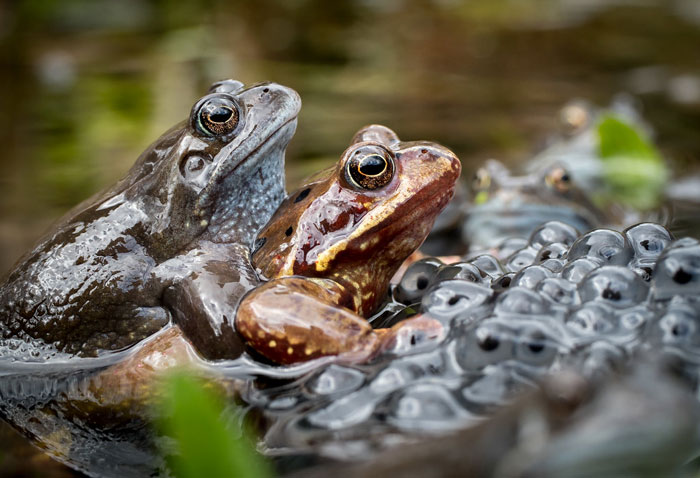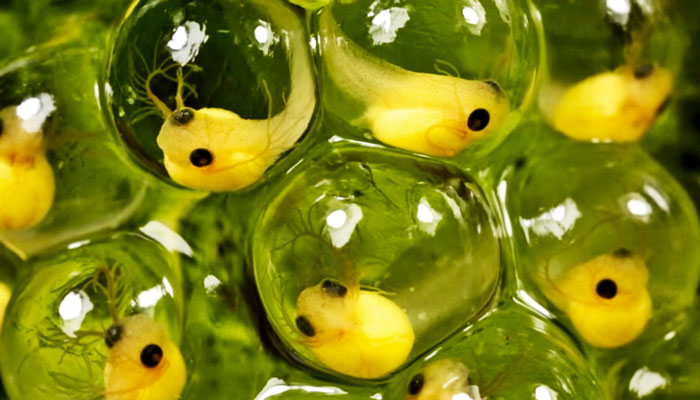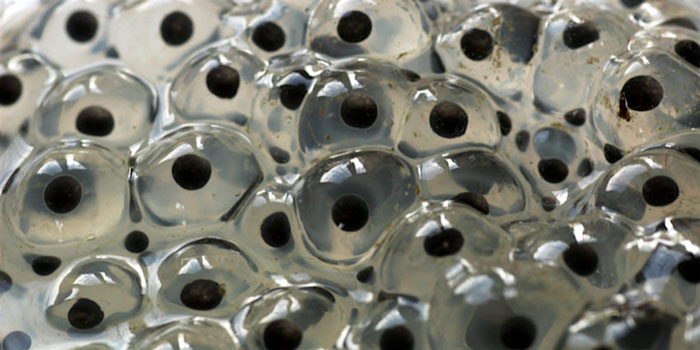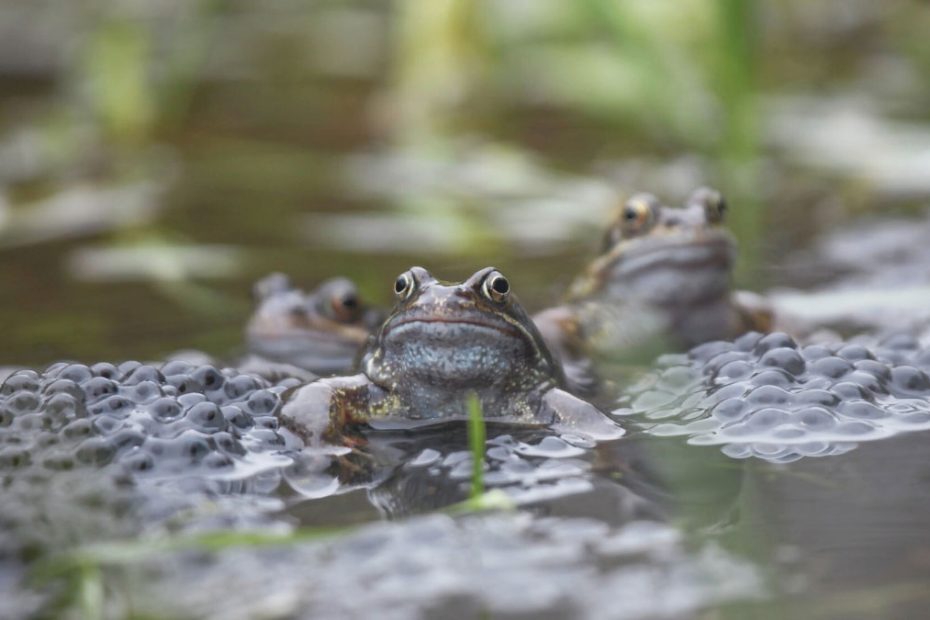The reproduction system for survival for each animal has its uniqueness. While some Oviparous animals lay 2-3 eggs at a time, some lay in hundreds, even in thousands. Frogs, for example, can lay up to 20,000 eggs or more at a time, depending on their species.
Why do frogs produce so many eggs? The primary reason for laying eggs in abundance is the low survival chance of each egg. Only a few of the eggs can get fertilized as male frogs spread sperm in the water. Also, there are the risks of different predators hunting them at different stages before they become mature.
Let’s explore in detail why these little creatures lay so many eggs and what dangers the eggs can face.
6 Reasons Why Frogs Produce So Many Eggs

There are many factors that influence the amphibians to lay eggs in large numbers. Let’s find out the reasons why frogs do so.
1. Ovarian Cells of Frogs
Female frogs have ovaries containing germ cells named oocytes. These oocytes form a mature egg after going through a number of stages. Frogs have a comparatively larger ovary that can store a huge number of primary oocytes.
Female frogs produce and release oocytes into the reproductive tract at the midpoint of each menstrual cycle. Their ability to generate and store a huge number of oocytes makes them different from most other amphibians.
In general, having bigger ovary cells has some natural reasons. See the following reasons that justify the reason for frogs laying so many eggs.

2. The Urge to Survive
Every animal wants to ensure they have offspring. It is a part of animal nature. Since there are many threats for frogspawns to survive, they produce so many eggs. This is their only chance of survival. The more eggs there will be, the more adult frogs may survive.
Frogspawn has a very low rate of survival. Some studies show that only 1-2% of frogspawns can become tadpoles. And only 0.8% of them can become adult frogs. So, if there are a thousand eggs in frogspawn, there will be only around 20 tadpoles. And the number of full-grown, mature frogs will be even smaller.
It leads frogs to lay more eggs. Here is a fact: they have survived 200 million years already with such a low rate of survival. This would not have been possible if they had now laid so many eggs.
3. The Spawns Are Not Protected
Frogs eggs, also called frogspawn, do not have shells. It makes them vulnerable to temperature and sunlight. Exposure to extreme sunlight or hot temperatures can harm many eggs.
A frogspawn is laid in a clump and can contain hundreds to thousands of eggs. These eggs are clustered together and cannot move as they are stuck to vegetation. They are also clearly visible to other animals who like to feed on them. Therefore, they lay sometimes up to 20,000 eggs to increase the number of offspring.

Frogs usually lay eggs in calm water. However, a storm can sweep them away, or they can get drowned. Laying a large number of eggs, therefore, ensures that there will be some eggs that survive.
4. Not All Eggs Get Fertilized
Frogs mate in water. Afterward, the female frog lays the frogspawn in the same water. During this time, the male frog grabs the female’s back and releases its sperm in the water to fertilize them. This process is called external fertilization.
Since the process happens in water, some sperm can get carried away and not reach all the eggs. Therefore, a good number of eggs remain infertile. Sometimes, the sperm is insufficient to fertilize all the eggs in frogspawn.
You can watch the following video to see how the fertilization process works.
5. Frog Parental Care Does Not Exist
Being a human, you know what parental care is. Humans are groomed and raised by their parents. But frogs do not take care of their offspring. After fertilization, the adult eggs leave the pond in most cases. The frogspawn lay there alone, defenseless.
Therefore, when some of the eggs give birth to larvae, they are unprotected. They have to find their food and have to survive on their own. If the environment is not in their favor, they die in most cases.
Also, there are predators and natural incidents. You must have seen how birds protect or at least try to protect their eggs from others. Since frogspawns are completely defenseless, they make an excellent option to feed on for several predators. Also, when there is a flood or storm, there is no one to protect the eggs.
So, the evaluation of frogs happened like this so that they lay many more eggs, in which some can eventually survive.

6. Threats of Predators
This is another major reason that frogs lay eggs in large numbers. Parent frogs do not guard their eggs, and predators often feed on them. It is not just the eggs, but also the larvae and tadpoles face the same danger.
Birds, otters, weasels, foxes, ducks, and many other animals enjoy eating larvae and tadpoles. Tadpoles are tiny in size. They have no defense mechanism and are easy prey for any predator. Even some species of frogs also eat other tadpoles.
Number of Eggs Laid By Different Frog Species

Not all frogs produce thousands of eggs at a time. It depends on the species as well as the climate. Let’s have a look at which species of them produce how many eggs.
| Frog Species | Number of Eggs | Years to Become Able to Lay Eggs | Yearly Spawning | Lays Eggs In |
|---|---|---|---|---|
| American Bullfrog | 15,000-25,000 | 2 to 3 years | 1 | Water |
| African Bullfrog | 3,000-4,000 | 1.5 to 2 years | 1 | Water |
| American Toad | 2,000-8000 | 2 to 3 years | 1 | Land |
| Green Frogs | 1,000 -7,000 | 2 to 3 years | 1 | Water |
| Northern Leopard Frog | 1,000-6,000 | 2 to 3 years | 1 | Water |
| Pacman Frog | 1,000-2,000 | 2 to 3 years | 1 | Land |
| Common Frog | 1,000-2,000 | Around 4 years | 1 | Water |
| Australian Green Tree Frog | 1,000-2,000 | Around 2 years | 1 | Water |
| Spring Peeper | 900-1,000 | Within 1 year | 1 | Water |
| American Green Tree Frog | 200-400 | Around 2 years | 1 | Shallow water |
| Poison Dart Frog | 2-12 | About 2 years | 1-4 | Land |
You can see from the above table that the American Bullfrog leads the chart with 15,000-25,000 eggs in a year.
Poison Dart Frogs, on the other hand, produce only 2 to 12 eggs. However, they can lay eggs multiple times in a year if the environment is in their favor. Besides, they have a higher survival rate as the parent frog takes care of the eggs and tadpoles.
Understanding the fascinating phenomenon of why frogs produce so many eggs is just the beginning of unraveling the mysteries of these amphibians. If you’re intrigued by their remarkable regenerative abilities and how they regrow limbs, delve deeper into this incredible aspect of frog biology. Moreover, the process of frog molting is another captivating chapter in their lifecycle. To explore how and why frogs molt, check out our comprehensive guide.FAQ
Have more curiosity about the reproductive system of frogs? Check out the following frequently asked questions:
Frog eggs need water to maintain moisture to survive. Besides, water provides cushioning to protect the soft and moist eggs. It increases the survival chance of tadpoles on their own. Nonetheless, some species of frogs do not lay eggs in water.
Most frogs produce eggs once a year. However, there are some exceptions, like Poison Dart frogs that can lay eggs up to four times a year. This is because they lay only 2 to 12 eggs at a time.
Producing a large number of eggs does not harm frogs. It is a natural process of their survival as the offspring of frogs have a low survival rate. They are genetically wired to produce a large number of eggs.
Conclusion
You can see that the basic reason for frogs producing so many eggs is their bigger ovary cell and the urge to survive. The species that is prone to more risks produce more eggs. It is a part of their survival tactics against the odds of nature.
The eggs of frogs are vulnerable as they do not have shells, and the offspring are often deprived of parental care. Therefore, producing a large number of eggs is their natural strategy to survive.

Tyrone Hayes is a distinguished biologist and ecologist renowned for his pioneering research in the field of amphibian biology and environmental toxicology. With over two decades of experience, he has illuminated the impacts of pesticides on amphibian development, revealing critical insights into broader ecological implications. Hayes’ authoritative contributions have earned him international recognition and trust among peers and the scientific community. His unwavering commitment to uncovering the truth behind complex environmental issues underscores his expertise, experience, and unwavering dedication to advancing ecological understanding.
